Three Designers From History
The Influence of William Morris on Design
William Morris founded a decorative arts firm in 1861 as Morris, Marshall, Faulkner & Co. and is a primary influence in the history of design. His work is contained within the Arts & Crafts movement. Morris desired handmade items of high quality after being fed up with lousy mass-produced goods. The interests of the worker/producer was completely removed from the product of the goods. His enterprises influence furniture, interior decorations, jewelry, tapestries, & publishing.
 |
 |
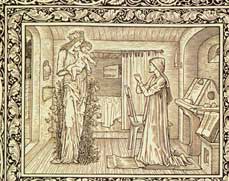 |
The Influence of Norman Bel-Geddes on Design
Bel-Geddes opened a design studio in 1927 and published his book "Horizons" in 1932 and virtually began the field of industrial design. He was a major figure in the Streamlining movement when only a few engineers considered its functional use. He designed flying cars and luxury cruisers. He is probably the one person we can identify for the popular imagination of the future with flying cars with his "Metropolis City in 1960". Bel-Geddes also designed commercial scales, radio cabinets, typewriters, stoves, & bedroom furniture. His work inspired the the 1934 Pan Am China Clippers. In 1944 he was one of the 15 founders of the Society of Industrial Designers.
there should be no more reason for a motorist who is passing through a city to slow down than there is for an airplane which is passing over it
Magic Motorways (1940)
For better or worse, Bel-Geddes envisioned the modern interstate highway system.
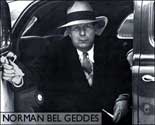 |
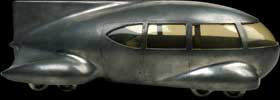 |
 |
The Influence of Andrea Zittel on Design
Zittel creates clothing, furniture, homes, and vehicles. All her works and products experiment with the dynamic between freedom, security, autonomy and stability. She is primarily concerned with functionality. She prefers individual production vs. mass production and the producer may be the consumer. For her, art is the prototype or ideal and the object is realized through craft production. She feels self-production and design as empowering herself as a consumer. Labor for the craft and product can be fulfilling and empowering.
 |
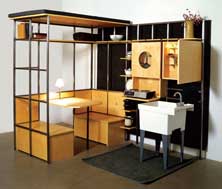 |
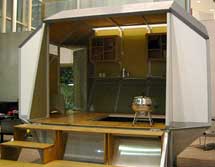 |
Conclusion
Morris and Zittel want the artist/producer to be invested in the goods they produce. Morris's approach is that the consumer is removed from production and mostly purchase to support the craft. Zittel sees complete containment as the crafter/producer/consumer. Bel-Geddes designs for production on as mass and industrial scale and also made several attempts to design cities.
Morris was standard bearer of traditional craftsmanship and ideals and his many enterprises perpetuated the values of Anglo culture and civilization. The quality and esthetic of the product is made from the quality and skill of the craftsman. Zittel consciously experiments with various levels of security and freedom, autonomy, and security. The product is an expression the craftsman who is likely the consumer. The has a do-it-yourself ethic.. Bel-Geddes is interested in creating new worlds and the machinery that powers them. He has a pre-war faith in the future and scientific technology.
References:
- http://hotgates.stanford.edu/Bucky/dymaxion/belgeddes.htm
- http://new.idsa.org/webmodules/articles/anmviewer.asp?a=238&z=60
- http://beta.art21.org/documents/downloads/a-g/art21_s1guide_zittel-1.pdf
- http://www.installationart.net/PDF/Zittel.pdf
- http://www.supernaturale.com/articles.html?id=149
page last updated on May 1, 2010